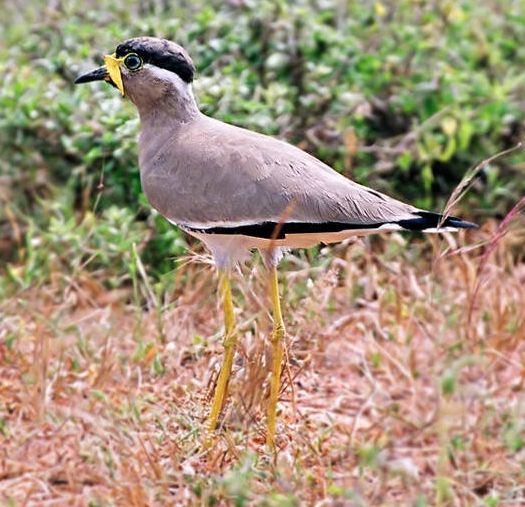|
| 질의: large white | 결과: 239번째/2106 | |
Yellow-wattled Lapwing (Vanellus malabaricus) - Wiki
| 제목: | Yellow-wattled Lapwing (Vanellus malabaricus) - Wiki
| |

| 해상도: 525x507
파일크기: 62139 Bytes
등록시간: 2007:10:01 11:45:10
|
Yellow-wattled Lapwing
From Wikipedia, the free encyclopedia
[Photo] Yellow-wattled Lapwing, Vanellus malabaricus. India. 2005 Photograph by S. M. Jayanth (jayanthsm AT yahoo.com)
The Yellow-wattled Lapwing, Vanellus malabaricus, is a lapwing, a group of largish waders in the family Charadriidae. It is a resident breeder in India.
These are conspicuous and unmistakable birds. They are medium-large pale brown waders with a black crown, long white supercilium and large yellow facial wattles. The underparts are white, and the tail is white, tipped black.
In flight, the upperwings have black flight feathers and brown coverts separated by a white bar. The underwings are largely white. The long legs are yellow.
This species is common in much of India, being seen in a variety of open lowland habitats. It tends to be seen in drier habitats than Red-wattled Lapwing, Vanellus indicus. The peak breeding season is in March to May ahead of the monsoons. It lays four eggs on a ground scrape. The nidifugous young are well camouflaged as they forage with the parents. Chicks will squat flat on the ground and freeze when parents emit an alarm call.
Yellow-wattled Lapwing has a loud Teu-oo call.
The food of the Yellow-wattled Lapwing is insects and other invertebrates, which are picked from the ground.
http://en.wikipedia.org/wiki/Yellow-wattled_Lapwing
| The text in this page is based on the copyrighted Wikipedia article shown in above URL. It is used under the GNU Free Documentation License. You may redistribute it, verbatim or modified, providing that you comply with the terms of the GFDL. |
|
^o^
동물그림창고 똑똑전화 누리집
^o^
|
|